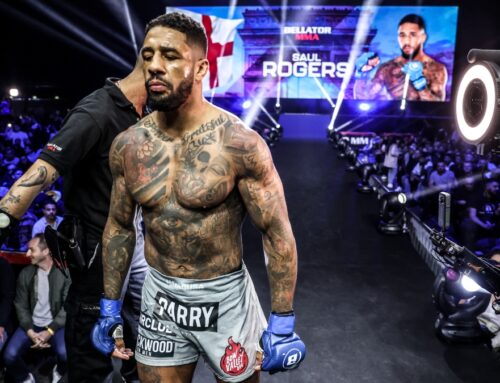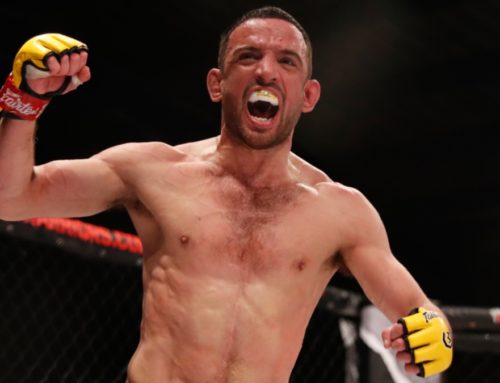I recently caught up with Dr Chris Lam, the Chief medical Doctor for the UFC in the UK and Europe. This is what he had to say about fighters safety, MMA in general and boxing.
FO: Hi Dr Lam, thank for taking this time for Fighters Only. Firstly how did you get involved in combat sports and the UFC?
I started TKD way back when I was about 13, from there it went to boxing, wrestling then the Jiu Jitsu side. One day while I was down in Manchester doing a bit of boxing with a friend, one of his friends worked with the boxing board and asked if I would like to work on the up and coming Hatton fight. While working for them some asked me if I had heard of the UFC (which I had and loved) and said they were looking for people and was I interested? I jumped at the chance!
FO: The question that everyone wants answered – what’s the worst injury you have seen in the cage?
Probably the BJ Penn -Joe Stevenson fight. The cut itself wasn’t actually that big – about a centimetre wide – but it was the fact that it was right on a vein, so as soon as BJ slapped on the choke blood just came spurting out! It looked worse than it was though.
FO: In your professional opinion, having been part of both high-level boxing and MMA, which would you say is more dangerous to the fighter?
In the short term I would say boxing. Purely on the fact that in a boxing match a fighter is taking hundreds of head shots and these guys aren’t playing around, these are some hard shots! The repeated trauma is what does the damage. On the other hand, in MMA the gloves have less padding so you have more chance that one big punch will do more damage.
Also there is the factor that the kind of stresses that are put onto joints during submissions is much higher than the body should take. Since we have no evidence on long-term MMA athletes, as the sport is quite young, its hard to say what long term damage will be caused.
FO: Is the ten-count in boxing as bad for the fighters as the critics say and do you see it as a positive that it is absent in MMA?
Most definitely. Since MMA uses much smaller gloves, the ten count could not apply based on the fact that the concussive force is already high in MMA. Giving a fighter a ten count is always a bad idea because a fight will carry on even when they really shouldn’t.
That’s why the refs and doctors work so hard in keeping the fighters safe. Plus, the ten count doesn’t make for an exiting punch for the fan as there is too much stop/start. People want to see fast, exciting fights.
FO: What is the main challenge that you face in keeping fighters safe?
Being able to read the fight is a big one. Doctors and paramedics who haven’t seen any MMA before lack the ability to see when a fighter has gone past that point were they can recover. The trick is to spot those little injuries that can turn into big ones, and keep an eye on them in between rounds etc.
FO: What changes would you make to the current unified MMA rules to benefit the fighter in both the short and long term?
Nothing really. I think what we have now in the UFC is the best we are going to get.
FO: Many fans are calling for knees on the ground to be added to the rules, what are your thoughts on this?
To be honest I think we should leave them out. What we have now are by far the best rules of keeping it as close to a real fight as possible without putting the fighters health at further risk. As the long term effects of MMA are not yet known, bringing back soccer kicks and stamps is just asking for trouble. Plus MMA has a hard enough time trying to get over the ‘human cock fighting’ image without kicks on a grounded opponent.
FO: It has been reported that in some local UK MMA shows the pre-fight physical is next to nothing, in some cases just the question ‘Have you been knocked out in the last 10 days?’ What advice would you give local shows to ensure the safety of their fighters?
This is terrible! At the very minimum promoters should be providing a doctor and having paramedics cage-side. The reason that this may not happen in shows at the moment is the fact that it comes down to cost. The less outgoings a show has the more money promoters make. To be honest I don’t think this will get any better till we have a governing body in UK MMA.
FO: For all the fighters reading this, what should be the MINIMUM that they should expect in a pre- and post-fight physical?
The MINIMUM that a Doctor should examine/cover with every fighter is the following;
* Full medical history of the fighter
* Any allergies
* If the fighter is on any current medication
* Examine any unusual bumps and recent cuts.
* If the fighter has recently had a cough/cold.
* Pulse/heart rate
* Blood pressure
* Eye and ear exam
* Hand exam
* No problems with joint mobility
This is the minimum fights should ask from their promoters, if they get less they are putting their health on the line.
FO: What advice would you give to fighters who are trying to preserve long-term health in a sport that is so demanding?
To be honest its the same thing you hear time and time again from your GP. Eat healthy, don’t drink to much and get plenty of rest. Saying that though, there is a lot of stuff coming out specifically for mobility and recovery in MMA. Anyone who is serious about being a better fighter on healthy in the long run would be a fool to miss this stuff out of their training.
By Mike Leng






